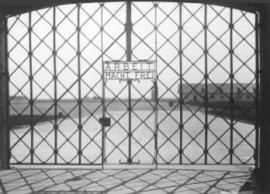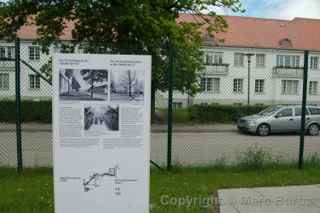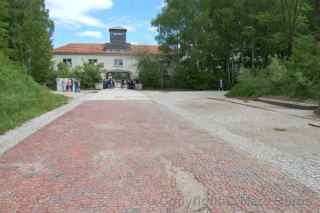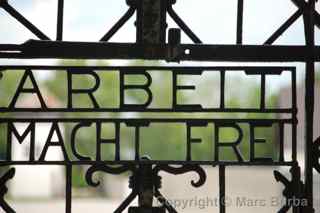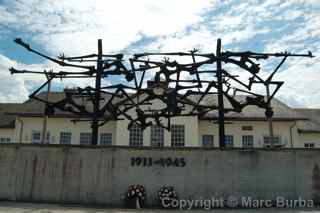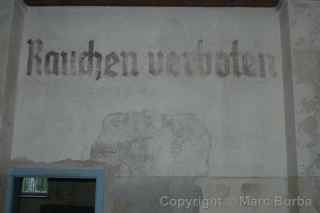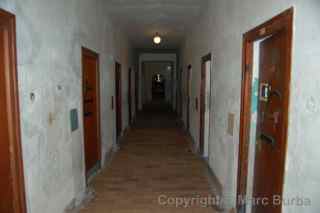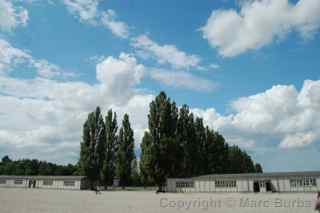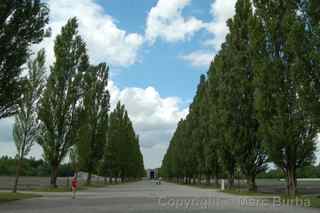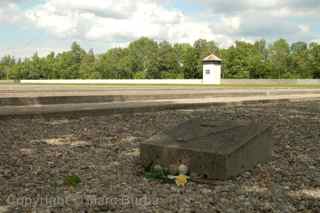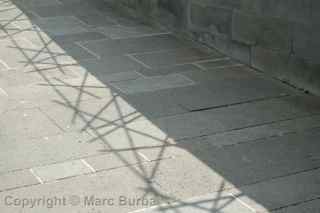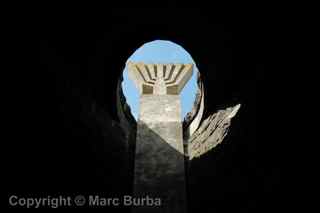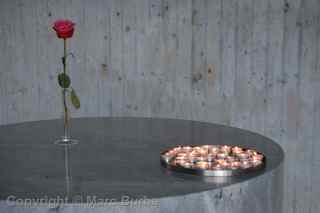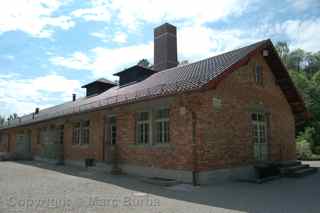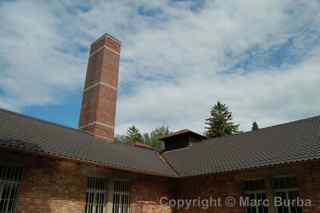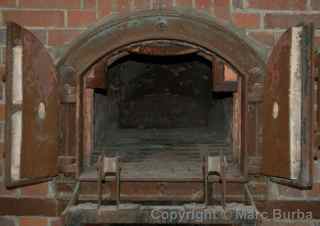Dachau Concentration Camp, Germany
 It’s a bit disconcerting to see brochures for the Dachau Concentration Camp Memorial Site among the leaflets for beer hall tours and other fun stuff to do in Munich. “Visit the crematorium! See the ovens!”
It’s a bit disconcerting to see brochures for the Dachau Concentration Camp Memorial Site among the leaflets for beer hall tours and other fun stuff to do in Munich. “Visit the crematorium! See the ovens!”
The brochure isn’t quite that in-your-face, but it still shows a photo of an open oven as one of the hooks. Of course this is an important site to visit, but the marketing could be a bit more subtle.
The former camp that held tens of thousands of political and other prisoners during World War II is only about 10 miles from the city, and reachable by train. We walked the same 2-mile path along which prisoners marched from the station: Today, it’s called the Path of Remembrance, and includes information panels along the route past homes and businesses and parks. Decades ago, townspeople could watch these marches from their windows.
Like the much larger Auschwitz-Birkenau camp in Poland, which we visited a few days later, the main gate is marked with the words “Arbeit Macht Frei” (Work will make you free). Dachau became a model for other concentration camps throughout Europe during World War II that resulted in the deaths of millions of people.
The main building where prisoners were admitted and processed is now the site’s museum, documenting in photos and displays the indignities and torture they endured before many were executed or died of disease. At least 32,000 died here and at subcamps through 1945; numbers from the site’s early years are unknown.
The grounds include reconstructions of two prisoner barracks and the foundations of 32 others that have been razed, as well as a preserved crematorium. Catholic, Jewish, Protestant, and Russian Orthodox memorials have been added over the years.
The site now is quiet — the paths among trees could be in any public park except for the memorials noting that these are mass graves where the remains from the crematorium were dumped.

